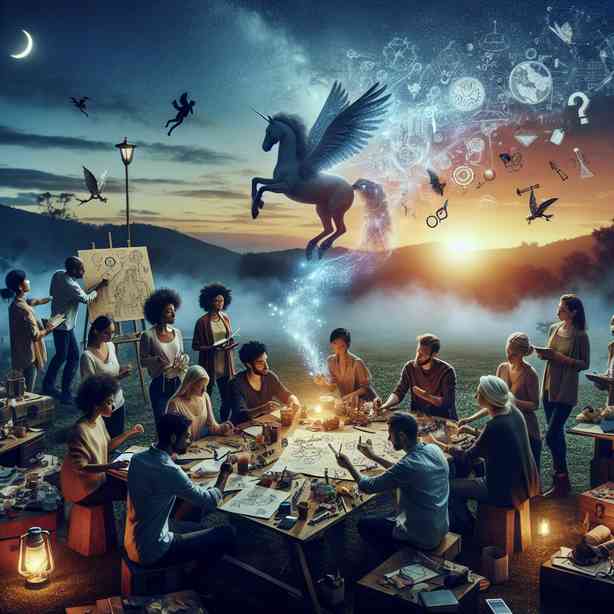
Creating a group piece that feels like magic is an extraordinary experience that brings together individuals, ideas, and emotions to create something unique and impactful. When we talk about a group piece, it typically involves a collective effort in music, theater, dance, or any collaborative art form, where each contributor plays a vital role in the tapestry of the final performance. This synergy of diverse talents and perspectives can create moments that are not only beautiful but also deeply resonant.
To begin, it’s important to understand the foundation of what constitutes a successful group piece. At the core, it requires clear communication and collaboration among participants. From the inception of the idea to its final execution, each member should feel valued and heard. Open dialogue allows for the free exchange of ideas, fostering an environment where creativity can flourish. It’s crucial to establish a safe space where individuals are encouraged to express themselves without fear of judgment. This mutual respect and understanding form the bedrock of any collaborative endeavor.
The next step involves setting a shared vision. Having a collective goal is essential for aligning the efforts and talents of all group members. This might involve brainstorming sessions where everyone contributes their thoughts and visions for the piece. Identifying a central theme or message not only gives direction to the project but also ensures that all elements work harmoniously together. The more specific and clear this vision is, the easier it will be for everyone to contribute cohesively, making the artistic journey smoother and more enjoyable.
As the creative process unfolds, experimentation becomes vital. Encouraging group members to explore different styles or approaches helps to push the boundaries of the initial concept. Whether it’s through improvisation, different choreography, or exploring various musical arrangements, the magic often lies in the unexpected discoveries made during this exploratory phase. When individuals are given the freedom to innovate and take risks, the likelihood of creating something truly magical increases exponentially.
Throughout this process, the importance of feedback cannot be overstated. Constructive criticism helps refine the work and enhances the overall quality of the piece. Regular check-ins and rehearsals allow for the natural evolution of the project, as ideas are tested and refined. It’s essential to approach feedback with an open mind and a positive attitude, focusing on how each contribution enriches the work rather than viewing it as a personal critique. This culture of constructive collaboration cultivates a sense of ownership and pride among all participants.
Once the piece begins to take shape, attention should be paid to the emotional journey it presents. A successful group piece should resonate on a deeper level with both the performers and the audience. This involves not only technical skill but also an emotional investment in the work. Each performer must connect with the material, infusing their own experiences and feelings into the performance. This authenticity is often what creates the sense of magic within a piece, allowing audiences to connect with the art on a personal level.
In addition to emotional depth, visual and auditory elements play a significant role in enhancing the experience. For performance arts, aspects such as lighting, costumes, sound design, and staging contribute immensely to the overall impact. These elements should align with the piece’s theme and help to tell the story in a compelling manner. The collective effort in ensuring these technical details is crucial, as they elevate the artistry of the group piece from just a performance to an immersive experience.
A pivotal moment in bringing the magic to life is the actual performance itself. The energy of live audiences can significantly influence the atmosphere and the execution of the piece. Here, the adrenaline and excitement can amplify the performers’ connection with each other as well as with those watching. It’s in these live moments where the practice and preparation culminate into something much grander. Each individual’s dedication culminates in a shared experience that transcends the effort put forth during rehearsals—a moment where the magic is palpable.
After the performance, it is beneficial to reflect on the experience. Group discussions can provide invaluable insights into what worked well and what could be improved for future projects. These reflections help to solidify the lessons learned and can strengthen the bonds formed during the creative process. Celebrating the success of the performance, no matter how big or small, fosters a sense of community and encourages individuals to continue pursuing collaborative efforts.
In conclusion, creating a group piece that feels like magic is a multifaceted process that involves open communication, shared vision, experimentation, and emotional depth. When individuals come together, pooling their talents and perspectives, they can craft something that not only captivates the audience but also transforms the participants themselves. It’s this journey—the collaboration, the connection, and the creativity—that ultimately brings forth the enchantment of the art. Embracing each stage of the process allows for a profound experience that enriches both the individual and the collective, turning mere ideas into a magical reality.


